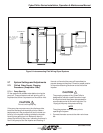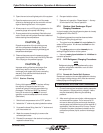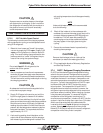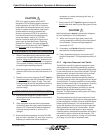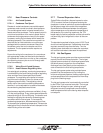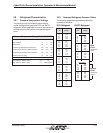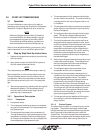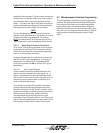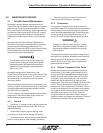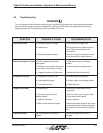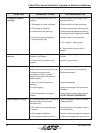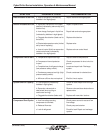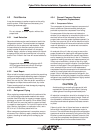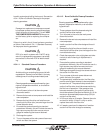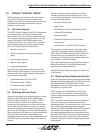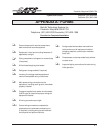
(©October, 2006)
CyberChiller Series Installation, Operation & Maintenance Manual
4-1
4.0 MAINTENANCE/REPAIRS
4.1 Periodic General Maintenance
Systematic, periodic general maintenance of the
CyberChiller unit is recommended for optimum system
performance. General maintenance should include,
but is not limited to the following: tightening electrical
connections, cleaning the interior of the unit, inspect-
ing the unit’s components visually. Checking level of
refrigerant and ensuring no moisture is in the refriger-
ant.
Use copies of the Periodic General Maintenance
Checklist in this manual, (see Appendix A), to record
periodic general maintenance inspections. For
assistance, contact the SATS Product Support Group.
Ensure adherence to all safety statements while
performing any type of maintenance.
WARNING
Turn off power to the unit at the main power dis-
connect switch unless you are performing tests
that require power. With power and controls en-
ergized, the unit could begin operating automati-
cally at any time.
Hazardous voltage will still be present in the
CyberChiller and condenser or dry cooler even with the
unit turned off at the control panel. To isolate the unit
for maintenance, turn off power at the main power
disconnect switch.
Always disconnect main power prior to performing any
service or repairs. To prevent personal injury, stay clear
of rotating components because automatic controls
may start them unexpectedly.
This unit employs high voltage equipment with rotating
components. Exercise extreme care to avoid acci-
dents and ensure proper operation.
4.1.1 General
• Check the “Y” strainer by removing the screen and
checking for accumulations of particulate. Clean as
required. (Monthly)
• Examine all wiring for signs of chafing, loose
connections or other obvious damage. (Quarterly)
• Examine brackets, motor mounts and hardware for
loose or missing parts or other damage. (Quarterly)
• Clean accumulations of dust and dirt from all
interior and exterior surfaces. (Quarterly)
4.1.2 Compressor
The refrigerant compressor and its drive motor are
hermetically sealed. The compressor crankcase has a
lifetime supply of oil and the drive motor has perma-
nently lubricated sealed bearings. Check the refriger-
ant charge using the sight glass while the unit is
running. If low on charge, check for refrigerant leaks.
WARNING
Phosgene, a deadly, poisonous gas, is gener-
ated when refrigerant is exposed to flame. Al-
ways ensure adequate ventilation during refrig-
eration repairs.
This equipment should be serviced and repaired by a
journeyman or a qualified refrigeration technician only.
Always recover all refrigerant prior to any system
repairs, failure to do so may result in system over
pressurization and rupture.
4.1.3 Outdoor Condenser/Fluid Cooler
Maintenance access to the condenser, (remote air
cooled units) or dry cooler, (glycol cooled units) is
through one or two removable panels (depending on
model). Examine the areas around the air inlet and
outlet grills, fans, motors and coils. Use a vacuum
cleaner with a soft bristle brush to clean dirt from
components. Clean the coil of all debris that will inhibit
airflow. This can be done with a soft brush and com-
pressed air or with a commercial coil cleaner. Check
for bent or damaged coil fins and repair as necessary.
Do not permit snow to accumulate on or around the
condenser or dry cooler in the winter. Check all
refrigerant lines and capillaries or coolant lines for
vibration isolation and support as necessary. Check all
refrigerant and coolant lines for signs of leaks.



